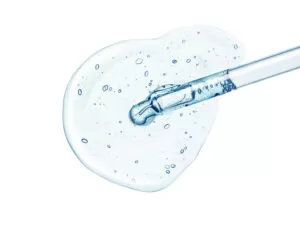Sunscreen is an essential tool for protecting our skin from the damaging effects of the sun’s ultraviolet (UV) radiation. It acts as a barrier between our skin and the harmful rays, shielding us from sunburn, premature ageing, and even the risk of skin cancer. However, not all sunscreens are created equal, and certain groups, such as kids, pregnant women, and lactating mothers, require extra care when choosing a sunscreen that is safe and effective for their unique needs.
In this blog, we will explore the concept of sunscreen, its importance in safeguarding our skin, and why it is crucial for kids, pregnant women, and lactating mothers to be cautious when selecting the right sunscreen. We will delve into the characteristics of UVA and UVB rays, the different types of sunscreens available, and the key factors to consider when making a safe sunscreen choice.
We will also address the concerns surrounding chemical sunscreens and highlight the safer alternative of physical sunscreens, with a focus on zinc oxide. We will explore the reasons why zinc oxide is considered a safe alternative, including its photostability, skin compatibility, and minimal environmental impact.
Ultraviolet rays and its types:
Ultraviolet or UV radiation from the sun consists of two main types:
UVA (Ultraviolet A)
UVA rays have longer wavelengths and can penetrate deeper into the skin compared to UVB rays. They account for the majority of UV radiation that reaches the Earth’s surface.
Here are some key features of UVA rays:
1. DNA damage:
UVA radiation can directly damage the DNA in skin cells by causing alterations to the DNA structure. Specifically, it can induce the formation of DNA photoproducts, such as cyclobutane pyrimidine dimers (CPDs) and pyrimidine pyrimidone photoproducts. These DNA lesions can interfere with normal DNA replication and transcription processes and may lead to mutations or other genetic abnormalities.
2. Ageing effects:
UVA rays are the primary contributors to premature skin ageing. They can break down collagen and elastin fibres, leading to the development of wrinkles, fine lines, and sagging skin.
3. Skin damage:
UVA rays can cause long-term damage, such as the formation of dark spots, uneven skin tone, and the appearance of photoaging.
4. Skin cancer risk:
Although UVA rays majorly cause skin burning and tanning, it also causes cancer when being exposed for a longer period of time.
UVB (Ultraviolet B)
UVB rays have shorter wavelengths and primarily affect the outermost layer of the skin, known as the epidermis.
Here are some characteristics of UVB rays:
1. Intensity: UVB rays are more intense than UVA rays. They are the primary cause of sunburns and play a vital role in the development of skin cancer.
2. Seasonal variation: UVB rays are more prevalent during the summer months and in regions closer to the equator. They are less intense in winter and at higher latitudes.
3. Skin damage: UVB rays can directly damage the DNA in skin cells, leading to the development of sunburns, redness, and the potential for long-term skin damage.
4. Vitamin D synthesis: While excessive UVB exposure can be harmful, these rays also play a vital role in the production of vitamin D in the skin.
It’s important to note that both UVA and UVB rays contribute to skin damage, premature ageing, and skin cancer. Therefore, using broad-spectrum sunscreen that protects against both types of UV radiation is crucial for comprehensive sun protection.
Why do you need sunscreen?
1. Protection against sunburn: UVB rays are primarily responsible for causing sunburn. Sunscreen with a high sun protection factor (SPF) helps to block UVB rays and prevent sunburn.
2. Prevention of skin damage: UVA rays penetrate deeper into the skin and can cause long-term damage. Sunscreen with broad-spectrum protection shields your skin from both UVA and UVB rays, reducing the risk of premature ageing, wrinkles, dark spots, and other signs of sun damage.
3. Lower risk of skin cancer: Prolonged and unprotected exposure to UV radiation increases the risk of developing skin cancer, including melanoma, the most dangerous type. Regularly applying sunscreen helps minimise this risk by reducing UV radiation absorption.
Why do kids, pregnant women, and lactating mothers need to be extra careful when choosing a sunscreen?
For certain groups, such as kids, pregnant women, and lactating mothers, finding a safe and effective sunscreen can be a daunting task. With concerns about chemical ingredients and potential risks, it’s crucial to choose a sunscreen that provides optimal protection without compromising the well-being of these vulnerable individuals.
In this blog post, we will explore the key factors to consider when selecting the safest sunscreen for kids, pregnant women, and lactating mothers, and highlight some top product recommendations.
Importance of Sunscreen for Kids, Pregnant Women, and Lactating Mothers
A. Kids:
Children’s skin is more sensitive and delicate compared to adult skin, making it more susceptible to sunburn and long-term damage caused by UV radiation.
Here’s why sunscreen is important for kids:
- Sunburn prevention: Sunscreens like Zinclear help prevent sunburn in children, which can be painful and increase the risk of skin damage later in life.
- Reduced risk of skin cancer: Childhood sunburns can significantly increase the risk of skin cancer in adulthood. Regular sunscreen use can help minimise this risk.
- Protection during outdoor activities: Kids often spend more time outdoors, participating in activities such as sports and play. Applying sunscreen helps shield their skin from harmful UV rays during these activities.
- Establishing good sun protection habits: Encouraging kids to use sunscreen from an early age helps instill good sun protection habits that they can carry into adulthood.
B. Pregnant Women:
During pregnancy, a woman’s body undergoes hormonal changes that can make her skin more susceptible to the effects of UV radiation. Additionally, certain conditions, such as melasma (darkening of the skin) or increased skin sensitivity, may arise during pregnancy.
Here’s why sunscreen is important for pregnant women:
- Protection against melasma: Melasma, also known as “pregnancy mask,” can cause dark patches on the face. Sunscreen helps prevent or minimise the exacerbation of melasma by shielding the skin from UV rays.
- Sunburn prevention: Pregnancy can make the skin more sensitive, increasing the risk of sunburn. Sunscreen helps protect against sunburn, reducing discomfort and potential skin damage.
- Minimising skin changes: Sunscreen can help minimise the impact of hormonal changes on the skin, such as increased pigmentation or skin sensitivity, by providing a protective barrier against UV rays.
C. Lactating Mothers:
Sun exposure can exacerbate skin sensitivity and aggravate conditions like melasma and chloasma that are common during postpartum. Usage of sunscreens like Zinclear is crucial to maintain skin health during this phase.
It is important for lactating mothers for the following reasons:
- Preventing sunburn: Lactating mothers spend time outdoors, and sunburn can cause discomfort and affect their ability to care for their baby. Sunscreen helps prevent sunburn and allows mothers to stay protected while enjoying outdoor activities.
- Protection against UV radiation: Exposure to UV radiation can lead to long-term skin damage, including premature ageing and an increased risk of skin cancer. By using sunscreen, lactating mothers can protect their skin from these harmful effects.
- Setting a good example: Lactating mothers who use sunscreen like Zinclear set a good example for their children and promote sun protection as a healthy habit.
Key Considerations for Choosing Safe Sunscreen
1. Broad-Spectrum Protection: Look for sunscreens that provide broad-spectrum protection, meaning they shield against both UVA and UVB rays. UVA rays penetrate deep into the skin, causing premature ageing and increasing the risk of skin cancer. UVB rays are responsible for sunburns. The label should state “broad-spectrum” to ensure adequate protection.
2. SPF Rating: Sun Protection Factor (SPF) indicates the level of protection against UVB rays. For kids, pregnant women, and lactating mothers, a minimum SPF of 30 is recommended. However, higher SPF ratings offer increased protection.
3. Physical vs. Chemical Sunscreens: Physical sunscreens like Zinclear contain mineral ingredient zinc oxide, which form a protective barrier on the skin’s surface and reflect UV rays. Chemical sunscreens, on the other hand, absorb UV rays and convert them into heat. Physical sunscreens are generally considered safer as they don’t penetrate the skin.
4. Avoid Harmful Chemicals: Some chemical sunscreen ingredients, such as oxybenzone and octinoxate, have raised concerns about their potential hormone-disrupting effects. Look for sunscreens that are free from these chemicals, as well as parabens, phthalates, and artificial fragrances.
Zinc Oxide - A Safe Alternative to Chemical Sunscreens
Sun protection is of utmost importance for the well-being of young children, infants, pregnant women, and lactating mothers. Exposure to the sun without adequate protection can lead to increased risks of skin cancer later in life. Currently, the majority of sunscreens available in the market are chemical sunscreens that contain chemical UV filters.
However, recent studies have raised concerns about the absorption of these chemical UV filters into the skin and their subsequent circulation throughout the body. It has been found that these chemicals can be detected in urine, breast milk, and plasma up to 7 days after sunscreen use. What’s even more alarming is that the concentration of these chemicals in the plasma exceeds the safety threshold set by the U.S. Food and Drug Administration for toxicology testing by a staggering 40 times.
Numerous research studies have linked chemical UV filters to hormonal dysregulation and developmental impairments. This is especially concerning for children under 6 months of age, as their skin barrier function is still developing, and they have a larger surface area in proportion to their body weight, resulting in increased absorption of these chemicals. Additionally, children are more prone to contact dermatitis, allergies, and inflammation when exposed to chemical UV filters.
On the other hand, physical UV filters such as Zinc Oxide and Titanium Dioxide offer a safer alternative. Unlike chemical filters, physical filters do not penetrate the skin and are considered non-irritating, even for infant skin. While both Zinc Oxide and Titanium Dioxide provide broad-spectrum protection, Zinc Oxide offers superior UVA protection. UVA rays are known to penetrate deeply into the dermis and are associated with the initiation of skin cancer.
Furthermore, when Titanium Dioxide absorbs UV light, it generates more free radicals compared to Zinc Oxide, resulting in oxidative damage to the skin. These free radicals have been found to induce apoptosis in various types of cells, further emphasising the potential risks associated with using Titanium Dioxide-based sunscreens.
In short, it is crucial to choose sunscreens like Zinclear with physical UV filters, particularly Zinc Oxide, for young children, infants, pregnant women, and lactating mothers. By opting for these safer alternatives, you can provide effective sun protection without exposing your loved ones to the potential systemic concerns and skin irritations associated with chemical UV filters.
Why is zinc-oxide considered a safe alternative?
1. Broad-spectrum protection: Zinc oxide is effective at providing protection against both UVA and UVB rays. UVA rays penetrate deep into the skin, contributing to skin ageing and increasing the risk of skin cancer. UVB rays primarily affect the outer layer of the skin, causing sunburn and also contributing to the risk of skin cancer. Sunscreens like Zinclear, which is rich in Zinc oxide forms a physical barrier on the skin that reflects and scatters both UVA and UVB rays, preventing them from penetrating and damaging the skin.
2. Photostability: Zinc oxide is a photostable ingredient, meaning it does not break down or degrade when exposed to sunlight. This ensures that it remains effective over time and provides consistent protection throughout sun exposure. Some chemical sunscreens, on the other hand, can degrade under sunlight and become less effective over time.
3. Gentle on the skin: Zinc oxide is generally well-tolerated by most skin types, including sensitive skin. It is considered non-irritating and non-sensitizing, meaning it is less likely to cause allergic reactions or skin irritations. This makes it a suitable option for individuals with sensitive or reactive skin who may experience adverse reactions to certain chemical sunscreen ingredients.
4. Minimal absorption: When applied topically, zinc oxide particles sit on the surface of the skin and form a physical barrier. The particles are too large to be absorbed into the skin, reducing the risk of potential systemic effects. This is in contrast to some chemical sunscreen ingredients, which can be absorbed into the bloodstream to a certain extent. However, it’s worth noting that zinc oxide nanoparticles, which are smaller particles of zinc oxide, have raised some concerns regarding potential absorption. Current research suggests that the absorption of nanoparticles is minimal and does not pose significant health risks, but further studies are ongoing to better understand their effects.
5. Environmental friendliness: Zinc oxide is considered environmentally safe compared to some chemical sunscreen ingredients. Certain chemical sunscreens, such as oxybenzone and octinoxate, have been found to be harmful to coral reefs and marine life when they enter aquatic environments through swimming or washing off. On the other hand, Zinclear that contains zinc oxide, is biodegradable and does not pose the same threat to coral reefs and marine ecosystems, making it a more environmentally friendly choice.
It’s important to note that the safety and efficacy of any sunscreen product, including those containing zinc oxide, depend on factors such as proper application, formulation, and individual reactions. If you have specific concerns or skin conditions, it’s always a good idea to consult with a dermatologist or healthcare professional for personalised advice.
In a nutshell…
When it comes to choosing a safe sunscreen for kids, pregnant women, and lactating mothers, it’s important to consider factors such as broad-spectrum protection, SPF rating, and the absence of harmful chemicals. By opting for physical sunscreens like Zinclear and carefully examining the ingredient list, you can find products that offer effective sun protection without compromising the health and safety of these vulnerable groups. Remember, regular and proper application of sunscreen, along with other sun-protective measures like seeking shade and wearing protective clothing, is essential for maintaining healthy skin and preventing sun damage for both children and adults alike.




